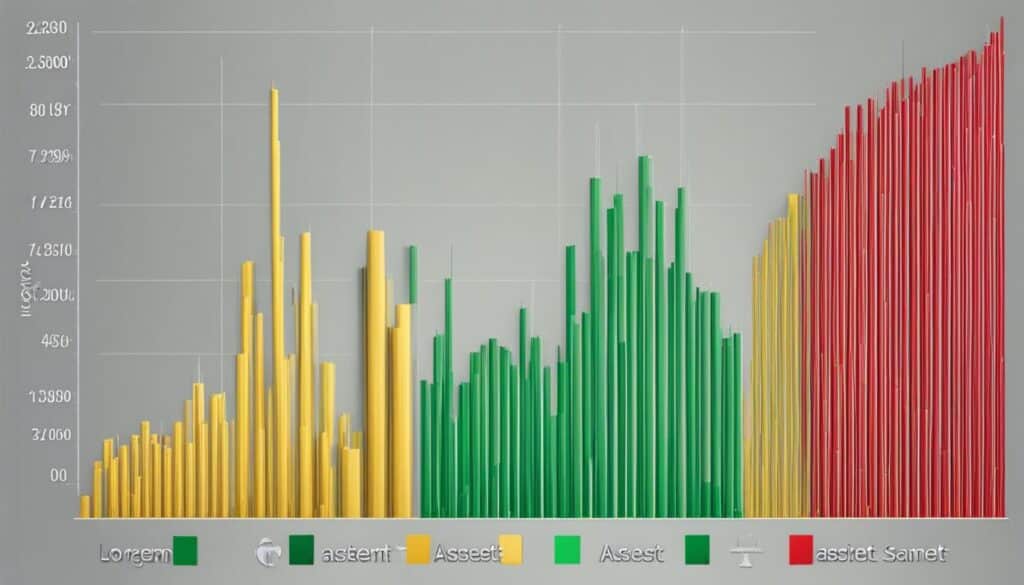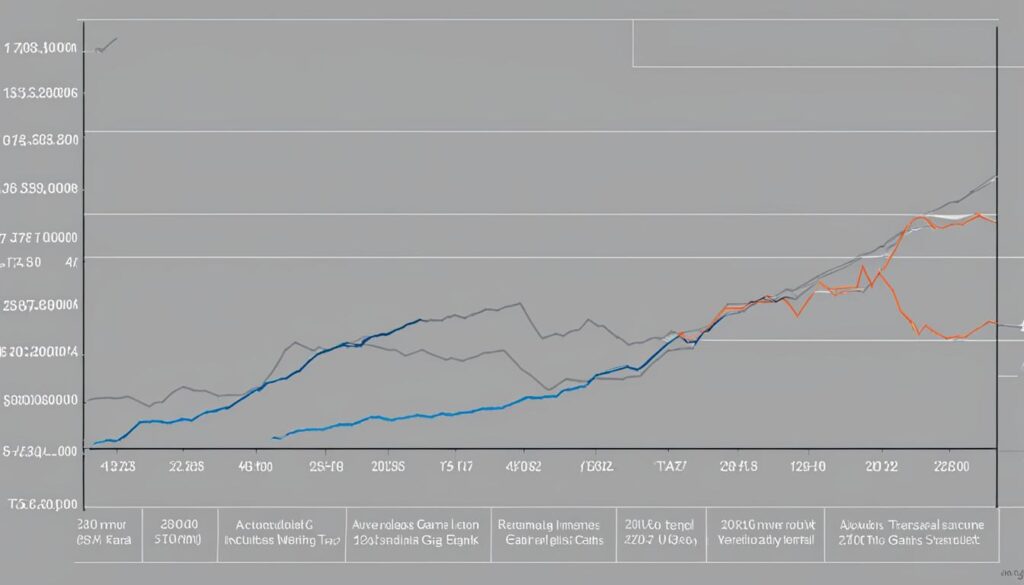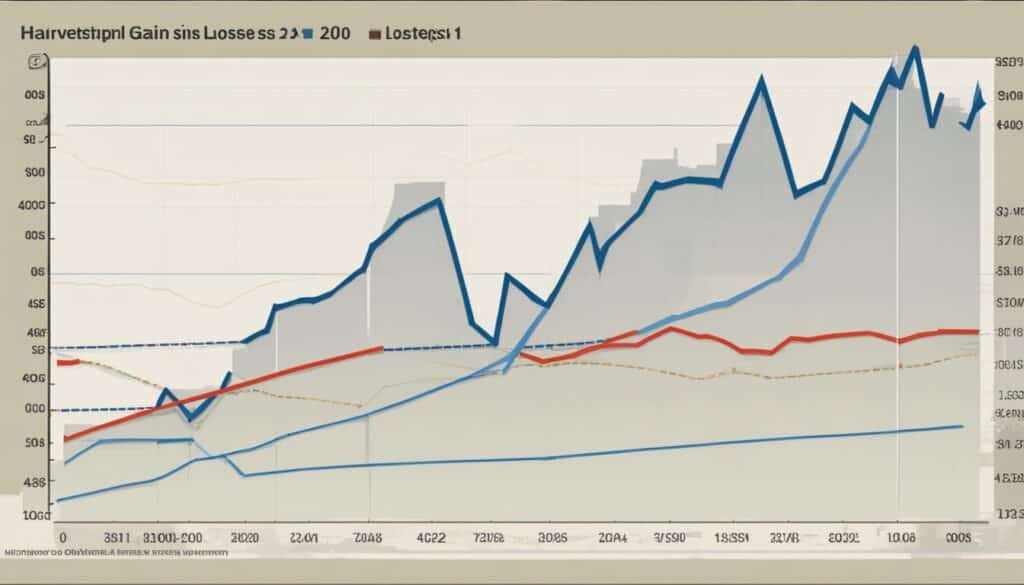As potential changes to capital gains tax loom on the horizon, proactive tax planning is crucial to navigate this shifting landscape. How to avoid capital tax gain has become a pressing concern for many investors, prompting a deep dive into established capital gains tax avoidance strategies. Understanding and employing these strategies, such as the annual harvesting of capital gains to avoid breaching the $1 million income level, can prevent triggering higher tax rates, and is vital for managing your investments efficiently.
Moreover, these tactics often involve resetting the asset’s cost basis, which lays the groundwork for reducing or deferring tax liabilities. By utilizing tools like Charitable Remainder Trusts (CRATs) and Charitable Remainder Unitrusts (CRUTs), you can defer the payment of capital gains tax as you move appreciated assets into the trust before sale, eventually generating income over time. Keep reading to learn more about these methods and how they can help you in avoiding capital gains tax on property sales and other assets.
Understanding the Implications of Capital Gains Tax
Capital gains tax is a critical aspect of taxation for investors, as it influences the net profit derived from selling capital assets, which consist of not only real estate but also stocks and businesses. With tax rates varying depending on state, investment horizon, and income level — being 20% at the uppermost federal level for long-term gains — it holds significant ramifications for investors. Gaining a deep understanding of these nuances informs better tax strategy and asset management.
What Capital Gains Tax Means for Investors
Capital gains tax directly impacts an investor’s bottom line. The specific rates applicable to investment gains differ across states, investment horizons, and income levels. Being mindful of these variations and structuring a tax-efficient approach to buying and selling capital assets can potentially boost overall profitability. Additionally, recognizing tax-saving opportunities such as tax-deferred accounts and harvesting losses to offset gains can further contribute to minimizing tax on investment gains.
Impact of Recent Tax Law Changes on Capital Gains
Recent proposals by the Biden Administration may have far-reaching effects on the tax landscape for capital gains, particularly for estates valued over $3.5 million, consisting mainly of appreciated property.
These potential legislative changes emphasize the urgency for strategic tax planning that effectively incorporates existing tactics like Charitable Remainder Annuity Trusts (CRATs), Charitable Remainder Unitrusts (CRUTs), and deferring gains through Opportunity Zone Funds. These methods remain unaltered by the proposed revisions in legislation and can significantly aid in minimizing capital gains tax.
Effective Tax Planning for Capital Gains

Effective tax planning for capital gains is crucial for investors seeking to optimize their financial situation and minimize tax liabilities. To achieve this, it is important to leverage existing legal frameworks and strategic planning in conjunction with professional financial and tax advice. Two vital strategies involve holding onto assets for over a year to qualify for lower long-term capital gains tax rates, and managing income levels to stay below specific tax thresholds, such as the strategic $1 million level.
When investors hold onto their assets for over a year before selling, it allows them to access lower long-term capital gains tax rates, effectively reducing their overall tax liability. Tax rates for long-term capital gains tend to be more favorable and range from 0% to 20% depending on an individual’s taxable income and filing status. By waiting for the right time to sell and benefitting from lower tax rates for long-term investments, investors can make considerable savings on their taxes.
Another effective technique for tax planning for capital gains is managing income levels by carefully disposing of assets and aligning investments with one’s personal income threshold. By maintaining income below the $1 million threshold, investors can avoid higher capital gains tax rates and maximize tax efficiency. Staying below this specific threshold ensures that investors are taxed at a much lower rate for their capital gains, contributing to their overall financial strategy.
Strategies to reduce capital gains tax liability should consider a combination of holding and disposing of assets, depending on the tax implications and the investor’s specific financial situation. Proactive tax planning within the framework of current laws and regulations can enable investors to minimize the impact of capital gains tax on their investments and improve long-term financial outcomes. Utilizing these strategies effectively, along with professional guidance, will result in an optimized approach to managing one’s capital gains tax liability and maximizing investment potential.
Long-Term vs. Short-Term: Timing Your Asset Sales

In the world of investing, the timing of asset sales can play a crucial role in determining the tax implications of your transactions. Striking the right balance between long-term and short-term asset sales can not only help you optimize your tax liability but also maximize your overall investment returns.
One of the most effective strategies employed by investors is delaying asset sales to enjoy the benefits of favorable tax rates associated with long-term capital gains.
The Benefits of Holding Investments Over a Year
By holding investments for more than a year, investors can shift their gains from short-term to long-term, thus significantly lowering their potential tax rate. In some income brackets, this could mean paying as little as 0% in capital gains tax on long-term investments, which is a remarkable incentive to hold assets for a longer period.
The division between short-term and long-term gains results in differing tax treatment, with long-term gains enjoying preferential rates. This is a reflection of the government’s intention to encourage long-term investments, which are considered more stable and beneficial to the economy.
Timing your sales right after the 12-month mark can help you convert higher taxed short-term gains into more favorable long-term gains. As a result, you not only save on taxes but also increase the overall profitability of your investment portfolio.
Understanding the distinction between long-term and short-term asset sales and strategically delaying the sale of assets can have a significant impact on your tax liability and overall investment returns. By holding onto investments for over a year, you can take advantage of lower tax rates associated with long-term gains, thus optimizing your financial situation for greater success.
Capital Gains Tax Exemptions and How to Qualify

For homeowners, one of the most significant ways to achieve capital gains tax exemptions and work towards avoiding capital gains tax is by utilizing the tax benefits available when selling their primary residence. For eligible taxpayers, up to $250,000 of profit from the sale of a primary residence can be exempt from capital gains tax. This exemption increases to $500,000 for married couples filing jointly.
However, certain requirements must be fulfilled to qualify for this exemption. Primarily, the homeowner must have lived in the property as their primary residence for at least 24 months within the last five years. There are situations where partial exemptions could be granted if the homeowner does not meet the full 24-month residency requirement due to circumstances such as a job change or health-related difficulties.
Understanding the eligibility criteria and planning accordingly could prove to be a significant benefit, as it not only reduces capital gains tax liability but also could lead to an overall better financial outcome from the sale of a primary residence.
It is crucial for homeowners to keep track of their residency duration and understand the potential tax benefits they could achieve, both in avoiding capital gains tax on their home sales and leveraging available capital gains tax exemptions. To ensure eligibility, consult a tax or financial professional for guidance on accurately tracking residency periods and navigating the qualifying requirements.
Charitable Strategies: CRATs and CRUTs for Tax Deferral

Charitable Remainder Trusts, specifically Charitable Remainder Annuity Trusts (CRATs) and Charitable Remainder Unitrusts (CRUTs), serve as effective tax deferment options for capital gains. These financial vehicles provide a strategic avenue for minimizing capital gains tax while fostering a philanthropic legacy. An in-depth understanding of how CRATs and CRUTs work is essential for determining their suitability in a comprehensive capital gains tax planning strategy.
The Functionality of Charitable Remainder Annuity Trusts
CRATs are a type of irrevocable trust wherein donors transfer assets to the trust and, in return, receive fixed annuity payments for life or a specified term. Unlike traditional trusts that pay beneficiaries based on the value of the assets, CRATs offer a fixed payment not dependent on the trust’s overall performance. This arrangement ensures predictable income for the donor.
Upon the end of the specified term or the donor’s death, the remainder interest of the trust goes to a designated charity. Tax deductions are received for the charitable remainder interest and are subject to IRS regulations. Consequently, CRATs not only minimize immediate tax burden but also leave a lasting philanthropic impact.
How Charitable Remainder Unitrusts Can Aid in Reducing Taxes
Charitable Remainder Unitrusts (CRUTs) function similarly to CRATs, with a few notable distinctions. Instead of providing fixed annuity payments, CRUTs offer fixed percentage payouts based on the annually assessed trust asset values. This approach enables the donor’s income to keep pace with fluctuations in the trust’s value.
Like CRATs, CRUTs reduce immediate tax burdens by allowing capital gains tax deductions on transferred property. Additionally, CRUTs establish a philanthropic legacy when the trust assets are ultimately transferred to a designated charity. By using either CRATs or CRUTs, individuals can effectively manage their tax liabilities while contributing to a cause they care about.
CRATs and CRUTs provide valuable tax deferment options for capital gains and a means for leaving a charitable legacy. When considering these tools, consult with a tax professional to determine whether either of these trusts is the right choice for you.
Using Charitable Lead Trusts (CLTs) to Your Advantage

Among the various capital gains tax savings tips, Charitable Lead Trusts (CLTs) stand out as an effective way to both reduce tax liabilities and contribute to charitable causes. By establishing a CLT, you can create a win-win scenario where you manage your wealth, minimize taxes, and make a positive impact on society.
CLTs are essentially wealth transfer vehicles benefiting a charity through annuity payments. The trust distributes a portion of its income to a designated charity for a specific period, after which the remaining assets are transferred to the grantor’s beneficiaries. This strategic approach not only supports charitable organizations but also offers the potential to obtain income and gift tax charitable deductions, further serving as tools for wealth management and tax reduction.
The primary advantage of Charitable Lead Trusts lies in the shift of tax liability they facilitate. The income generated by the trust is taxed initially in favor of the charitable organization, which allows the grantor to minimize taxes in the short-term. This strategy can be particularly favorable for investors facing significant capital gains taxes on appreciated assets, as it can help manage the impact on their overall tax situation.
Charitable Lead Trusts are a valuable addition to an investor’s capital gains tax savings tips repertoire. By incorporating CLTs into their wealth management strategy, investors can achieve a more desirable tax outcome while simultaneously contributing to causes they care about. As with any financial planning tool, it is essential to consult with a financial professional to assess whether a CLT is the right fit for your individual circumstances and objectives.
The Role of Qualified Opportunity Zone Funds in Tax Savings

Qualified Opportunity Zone Funds (QOZFs) offer investors a unique and attractive avenue to channel their investments, while enabling them to achieve substantial tax savings. These specialized funds emerged as a result of the 2017 Tax Cuts and Jobs Act, with the objective of incentivizing long-term investments in economically underprivileged areas across the United States.
- Deferral of capital gains taxes on the amount invested, thereby reducing current tax liabilities
- A 10-15% step-up in basis for investments held for 5-7 years, resulting in a reduction in the tax base and ultimately lowering the taxes owed when the gains are eventually recognized
- Potential for tax-free gains on investments held for more than 10 years, contingent upon meeting certain criteria and conditions
Defer Capital Gains and Reap Tax-Free Returns on Investments
One of the primary reasons for the growing popularity of QOZFs amongst investors seeking tax savings is the ability to defer capital gains. By investing the proceeds of a recent sale into a QOZF within the stipulated timeframe, investors can effectively defer the capital gains taxes that would have been due on the original sale.
Moreover, if the investment in the QOZF is held for at least 5 years, the investor benefits from a 10% step-up in basis, increasing to 15% if held for at least 7 years. This results in a reduction in the tax base and lower taxes due when the deferred gains are eventually recognized. The most attractive feature of investing in QOZFs is the potential for tax-free returns on investments held for a minimum of 10 years. Provided certain criteria are met, investors can enjoy tax-free gains when they eventually divest their interest in the QOZF.
Qualified Opportunity Zone Funds present a powerful tool for investors looking to optimize their tax strategies while supporting the revitalization of regions in need of economic growth. By considering QOZFs as part of their investing for tax savings plan, investors can benefit from deferring capital gains, reducing their tax base, and potentially reaping tax-free returns on their investments.
Status-Based Capital Gains Tax Breaks: How to Pay Zero Taxes

For some investors, particularly married couples with income below a certain threshold, there exist scenarios where capital gains tax can be reduced to zero. Status-based tax breaks play a significant role in these situations, allowing investors to pay zero taxes on capital gains if they fall within specific income parameters.
Married couples filing jointly with a taxable income below $80,000 may qualify for a 0% long-term capital gains tax rate. However, adjusting one’s taxable income within a specific year of realizing capital gains becomes vital to meet this requirement and obtain the tax break. Strategic use of tax-advantaged accounts, such as retirement and health savings accounts, can help achieve this goal.
For instance, making deductible contributions to a traditional IRA or 401(k) can help limit taxable income, increasing the likelihood of qualifying for the 0% capital gains tax rate. Similarly, utilizing a Health Savings Account (HSA) can directly reduce an investor’s taxable income as long as the contributions are used for qualified medical expenses.
It is essential to consult with a tax advisor or financial professional to discuss various tax planning strategies, as they can provide personalized suggestions tailored to individual circumstances. Monitoring income levels and being proactive in tax planning can lead to significant tax savings through status-based capital gains tax breaks.
Deferred Sale Trusts: Postpone Taxes with an Installment Sale

The Deferred Sale Trust (DST) is a powerful tax deferral strategy that can help investors minimize their capital gains tax liability by spreading the recognition of income from the sale of an asset over several years. This approach is based on the concept of an installment sale under the Internal Revenue Code (IRC) Section 453.
When opting for a Deferred Sale Trust, the seller transfers their asset to a trust instead of selling it directly to a buyer. The trust then sells the asset to a third-party buyer and receives the proceeds from the sale. Instead of the seller receiving a lump-sum payment, they receive a series of installment payments from the trust, which can be structured over a predetermined period of time.
This installment sale tax deferral process allows the seller to recognize income gradually while spreading any resulting capital gains tax over the entire payment period. This can effectively reduce the seller’s overall tax burden, as taxes are only due on the amounts received each year, rather than on the total sales proceeds.
Deferred Sale Trusts can be a useful tool to achieve a variety of financial and estate planning objectives. For example, they can be tailored to provide a stream of income for retirement, pay off debt, fund education expenses, or accomplish philanthropic goals. Additionally, a DST can help manage exposure to market volatility through diversification, as the seller can reinvest the proceeds from the installment payments in various market sectors.
Investors should keep in mind that moving forward with a Deferred Sale Trust requires careful consideration and thorough planning, as well as the assistance of experienced professionals, such as tax advisors and legal counsel. By taking these steps, sellers can effectively leverage a DST to postpone taxes and achieve their financial goals while maintaining compliance with applicable tax laws.
Utilizing Retirement Accounts to Offset Capital Gains

Retirement accounts such as Individual Retirement Accounts (IRAs) and 401(k)s offer significant opportunities for reducing your taxable income, and consequently, your capital gains tax liability. By strategically contributing to these accounts, you can potentially maintain your income below the capital gains tax threshold while fostering an efficient tax planning approach.
Typically, contributions made to traditional IRAs and 401(k)s are deductible from your taxable income, thereby offering a viable pathway towards a capital gains tax reduction. Furthermore, the growth of your investments within these accounts is tax-deferred until you start making withdrawals during retirement. This aspect can play a pivotal role in lowering your overall tax burden, including your capital gains tax.
Maximizing contributions to your retirement accounts not only paves the way for a more secure retirement but also curtails your current-year taxable income. By reducing your taxable income, you can position yourself in a lower tax bracket, which, in turn, may lead to a lesser capital gains tax rate. It is essential to remember that the annual contribution limits for these accounts are subject to change, and exceeding them can result in penalties.
Another advantage of utilizing retirement accounts is the potential for tax-free withdrawals during your retirement years, provided you have opted for a Roth IRA or Roth 401(k). These Roth accounts do not offer immediate tax deductions on contributions but enable your investments to grow tax-free, allowing for tax-free withdrawals in retirement. Consequently, Roth accounts can also contribute to overall tax reduction through retirement accounts capital gains management.
Smartly leveraging retirement accounts can be a critical ingredient in your overall tax-reduction strategy. By utilizing their benefits to specifically offset capital gains, you can effectively work towards managing your tax burden and making the most of your investments. As always, it is important to consult with financial and tax professionals to tailor a strategy that suits your individual circumstances and objectives.
Rebalance Your Portfolio: A Method to Minimize Taxes

Regular portfolio rebalancing is a vital component of any successful investment strategy. By adjusting investment allocations within non-qualified accounts and redirecting dividends to rebalance without selling appreciated assets, investors can minimize capital gains exposure. This strategy not only preserves the intended risk profile, but also helps to reduce capital gains taxes by avoiding the immediate tax implications of selling high-gain assets.
When performing portfolio rebalancing, it is essential to consider various factors such as the investor’s risk tolerance, investment horizon, and financial goals. A good rule of thumb is to review and adjust your portfolio allocations at least once a year. However, each investor’s situation is unique, and thus, it is crucial to develop a personalized rebalancing strategy.
An essential aspect of effective portfolio rebalancing is maintaining the balance between asset classes, like stocks, bonds, and cash. Shifting allocations within these classes allows investors to maintain their desired risk exposure while optimizing potential returns. Additionally, it is crucial to incorporate tax-efficient investment vehicles, such as tax-exempt bonds or tax-managed mutual funds, into the portfolio.
Beyond its ability to safeguard investment goals, portfolio rebalancing can also assist in managing capital gains taxes. By tactfully selling and buying investments that incur minimal tax consequences, investors can efficiently lessen their overall tax liability. For example, investors can sell assets with lower capital gains and offset gains with losses to reduce the tax impact.
Portfolio rebalancing can be a powerful strategy for both effective risk management and capital gains tax minimization. It is crucial to evaluate your portfolio regularly and make adjustments as needed to maintain balance and tax efficiency. As always, it is advisable to consult with a financial planner to create an optimal, personalized rebalancing strategy tailored to your needs and financial goals.
Tax Loss Harvesting as a Strategic Tool for Investors

Reducing capital gains tax requires not only proper planning but also adept execution of strategies to minimize tax liability. One such effective method is tax loss harvesting, which involves selling investments at a loss to offset capital gains realized from other investments. By implementing this strategic tax planning technique, investors can effectively lower their overall tax burden.
How does tax loss harvesting work? When an investor incurs losses from specific investments, they can use these losses to decrease the tax liability from other investments that generated gains. By offsetting gains with controlled losses, the investor can achieve better tax efficiency in their portfolio.
Offsetting Your Gains with Controlled Losses
Timing is a crucial element when deploying tax loss harvesting. To reap the benefits of this strategy, investors need to meticulously monitor their investment portfolio and identify appropriate opportunities for realizing losses. Furthermore, after selling an investment at a loss, care must be taken not to violate the “wash-sale” rule, which the Internal Revenue Service (IRS) enforces. This rule states that one cannot claim tax losses if they repurchase the same or a substantially similar investment within 30 days before or after the sale.
It is important to note that tax loss harvesting is not a one-size-fits-all solution. Each investor’s financial situation and investment objectives are unique, which means that the application of this strategy must be adapted based on individual circumstances. As such, it is essential to seek professional advice from financial planners and tax advisors to ensure that tax loss harvesting is the optimal method for meeting one’s financial goals and reducing tax liability.
Tax loss harvesting is a powerful strategic tax planning tool that can help investors minimize their capital gains tax liability. By intelligently managing the timing and selection of assets to sell, gains can be neutralized and investors can enjoy an effective tax rate reduction on their investments. However, this strategy requires careful monitoring of financial portfolios and adherence to IRS regulations, as well as professional guidance to ensure success.
Frequently Asked Questions
What are some effective capital gains tax avoidance strategies?
Effective strategies include holding assets for over a year, managing income levels, using tax-advantaged accounts, tax loss harvesting, and utilizing trusts like Charitable Remainder Annuity Trusts (CRATs), Charitable Remainder Unitrusts (CRUTs), Charitable Lead Trusts (CLTs), and Deferred Sale Trusts.
How can I minimize capital gains tax on property sales?
Utilize exemptions for primary residence sales, engage in strategic tax planning, use trusts like CRATs, CRUTs, CLTs, and Deferred Sale Trusts, invest in Qualified Opportunity Zone Funds, and hold onto property for over a year to access lower long-term capital gains rates.
How do recent tax law changes impact capital gains?
Proposed changes by the Biden Administration may significantly impact the tax landscape for capital gains, particularly for estates valued over $3.5 million consisting of mainly appreciated property. Changes emphasize the need for strategic tax planning and incorporating existing tactics like CRATs, CRUTs, and Opportunity Zone Funds.
What are the benefits of holding investments for over a year?
Holding investments for over a year can shift gains from short-term to long-term, lowering the potential tax rate to as little as 0% for certain income brackets. This strategy results in preferential rates for long-term capital gains.
How can I qualify for capital gains tax exemptions?
Certain exemptions, like the primary residence exclusion, are available to individuals and couples when selling property. To qualify, married couples filing jointly must have lived in the home for at least 24 months in the last five years, allowing up to $500,000 of profit to be exempt from capital gains tax.
How do CRATs and CRUTs help defer capital gains taxes?
By transferring assets to these trusts, individuals can receive fixed annuity payments (CRATs) or fixed percentage payouts (CRUTs) while deferring the payment of capital gains tax. The remainder interest in these trusts goes to a designated charity, providing tax deductions for the donor.
What are the benefits of using Charitable Lead Trusts (CLTs)?
CLTs provide a wealth transfer vehicle that benefits a charity through annuity payments. They offer potential income and gift tax charitable deductions, serving as tools for wealth management and tax reduction while providing a shift in tax liability timing and value-based asset transfers.
How can Qualified Opportunity Zone Funds lead to tax savings?
These investment vehicles offer tax benefits like deferral of capital gains taxes, a reduction in the tax base through a 10-15% step-up in basis for investments held 5-7 years, and potential tax-free gains on investments held over 10 years.
How can I pay zero taxes on capital gains?
Certain investors, particularly married couples with income below a specific threshold, can reduce their capital gains tax to zero by adjusting taxable income within a given year, strategically using retirement and health savings accounts.
How do Deferred Sale Trusts allow for tax deferral?
An asset is sold to a third-party by the trust, and the original seller receives installment payments. This arrangement defers tax liability and capital gains tax per IRC section 453 since the income is recognized gradually.
How can retirement accounts offset capital gains?
Contributions to retirement accounts such as IRAs and 401(k)s can help maintain income below capital gains tax thresholds, potentially lowering overall tax burden and fostering strategic tax planning.
What is tax loss harvesting, and how can it help with capital gains taxes?
Tax loss harvesting is a method where losses on some assets are sold to compensate gains on others. By managing the timing and selection of assets to sell, an investor can neutralize taxable gains and effectively lower their overall tax burden.
The Bottom Line
Adopting the right combination of capital gains tax strategies and investment tax optimization can significantly minimize or defer the tax burden for investors. This involves carefully timing asset sales, leveraging tax-advantaged accounts, and employing techniques like tax-loss harvesting and utilizing various trusts.
Some of the strategies discussed in this article include holding assets long-term, qualifying for exemptions, utilizing tax-deferral tools like Charitable Remainder Trusts (CRATs) and Charitable Remainder Unitrusts (CRUTs), investing in Qualified Opportunity Zone Funds, managing retirement accounts, portfolio rebalancing, and tax-loss harvesting.
Given the complex nature of tax laws and ever-changing legislation, it is critical to work with financial and tax professionals to tailor a strategy that best fits individual circumstances and objectives. By staying informed on proposed changes and potential impacts, investors can make informed decisions and maximize tax efficiency in their portfolio management.






